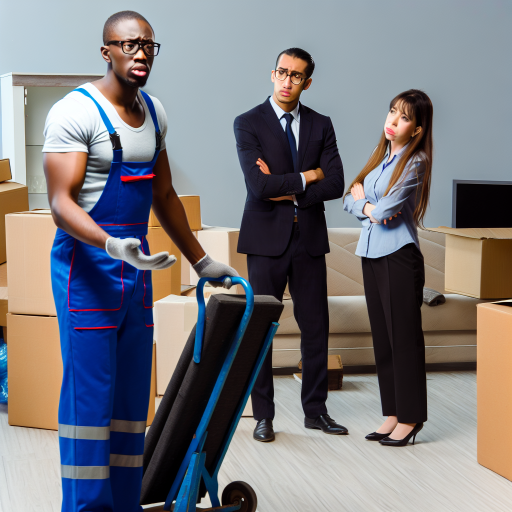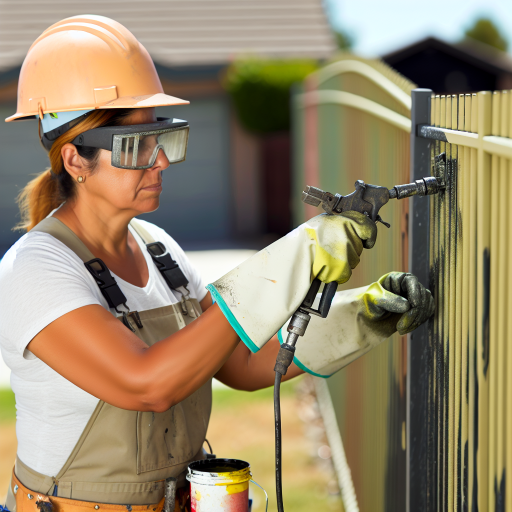Overview of Health Risks Faced by Miners
Mining poses serious health hazards including respiratory diseases like silicosis from inhaling dust.
Exposure to toxic chemicals, physical injuries, and long-term musculoskeletal issues are common.
Addressing Health Risks for Miner Well-being
Implementing proper ventilation systems can reduce dust exposure and respiratory ailments.
Regular health check-ups and monitoring can help detect early signs of health problems.
Providing adequate safety gear and training can prevent accidents and minimize injuries.
Encouraging rest breaks, proper nutrition, and hydration can combat fatigue and stress.
Promoting mental health resources and support can address psychological challenges faced by miners.
Health Risks for Miners
Miners are at risk for a variety of health issues due to the nature of their work.
Here are some of the common health risks that miners face:
Respiratory Issues
Exposure to dust and silica in mines can lead to respiratory problems such as coughing, wheezing, and shortness of breath.
These particles can also cause serious lung diseases like black lung disease.
Musculoskeletal Disorders
Miners often engage in heavy lifting and repetitive movements that can result in musculoskeletal disorders.
These include back pain, joint problems, and injuries from overexertion.
Hearing Loss
The noisy environment in mines can contribute to hearing loss over time.
Prolonged exposure to loud noises without adequate protection can cause irreversible damage to the ears.
Mental Health Challenges
Working in the isolated and high-stress environment of a mine can take a toll on miners’ mental health.
Stress, anxiety, and depression are common issues that miners may face.
Now that we’ve identified the health risks for miners, let’s explore some solutions to help mitigate these risks and promote better health and well-being.
Solutions for Miners’ Health Concerns
Proper Respiratory Protection
Miners should be provided with appropriate respiratory protective equipment to shield them from harmful dust and silica particles.
Regular medical check-ups can help monitor lung health.
Transform Your Career Today
Unlock a personalized career strategy that drives real results. Get tailored advice and a roadmap designed just for you.
Start NowErgonomic Work Practices
Implementing ergonomic work practices can help reduce the risk of musculoskeletal disorders.
This includes training on proper lifting techniques, using assistive devices, and taking regular breaks to prevent overexertion.
Hearing Conservation Programs
Employers should institute hearing conservation programs that include regular noise assessments, providing ear protection devices, and educating miners on the importance of protecting their hearing to prevent loss.
Mental Health Support
Offering mental health resources such as counseling services, stress management programs, and employee assistance programs can help miners cope with the mental health challenges they may encounter on the job.
By addressing these health risks and implementing appropriate solutions, mining companies can create a safer and healthier work environment for miners.
It’s crucial to prioritize the well-being of miners to ensure their longevity and quality of life.
Solutions for Respiratory Issues:
- Implementing dust control measures in mines
- Providing proper ventilation systems
- Requiring the use of personal protective equipment such as respirators
Implementing Dust Control Measures:
One effective solution to combat respiratory issues among miners is implementing dust control measures within mining operations.
Dust particles generated during mining activities can lead to various respiratory problems if not properly controlled.
Using techniques such as water sprays, ventilation systems, and dust collection systems can significantly reduce the amount of dust in the air.
Providing Proper Ventilation Systems:
Ensuring proper ventilation in mines is crucial for maintaining good air quality and reducing the concentration of harmful contaminants.
By installing well-designed ventilation systems, miners can breathe in clean air and minimize the risk of respiratory issues.
Regular maintenance and monitoring of these systems are essential to ensure their effectiveness.
Requiring the Use of Personal Protective Equipment:
Personal protective equipment (PPE) such as respirators plays a vital role in protecting miners from inhaling harmful particles and gases present in the mining environment.
Employers should mandate the use of appropriate respirators based on the level of exposure to dust and other contaminants.
Proper training on how to use and maintain respirators is also essential to ensure their effectiveness.
Addressing Respiratory Issues:
Addressing respiratory issues among miners requires a comprehensive approach that includes implementing dust control measures, providing proper ventilation systems, and requiring the use of personal protective equipment such as respirators.
By prioritizing the health and safety of miners, mining companies can create a healthier work environment and reduce the prevalence of respiratory diseases in the industry.
Delve into the Subject: Navigating Licensing for Pest Control Jobs
Solutions for Musculoskeletal Disorders:
Providing training on proper lifting techniques can significantly reduce strain on miners’ bodies.
Implementing ergonomic workstations and tools can help miners maintain proper posture and reduce the risk of injury.
Transform Your Career Today
Unlock a personalized career strategy that drives real results. Get tailored advice and a roadmap designed just for you.
Start NowOffering regular breaks to prevent overexertion is essential in allowing miners to rest their muscles and avoid fatigue.
Proper Lifting Techniques:
Miners should be trained on how to lift heavy objects properly, using their legs and not their back to avoid strain.
Ergonomic Workstations:
By setting up workstations that are ergonomically designed, miners can reduce the risk of musculoskeletal disorders.
Regular Breaks:
Allowing miners to take breaks throughout their shift can prevent overexertion and reduce the likelihood of injuries.
Addressing musculoskeletal disorders in miners requires a combination of proper training, ergonomic workstations, and breaks to promote their health and well-being.
By implementing these solutions, miners can work safely and effectively, minimizing the risk of injuries and long-term health issues.
Gain More Insights: Top 5 Machinist Tools and Their Uses Explained
Solutions for Hearing Loss:
- Enforcing use of hearing protection devices
- Monitoring noise levels in mines and implementing sound control measures
- Providing regular hearing screenings for miners
Enforcing Use of Hearing Protection Devices
One of the most effective solutions for preventing hearing loss among miners is to ensure the consistent use of hearing protection devices.
These devices, such as earplugs or earmuffs, are designed to reduce exposure to harmful noise levels in the mining environment.
Monitoring Noise Levels in Mines
Another key strategy for mitigating the risk of hearing loss is to monitor noise levels in mines.
By regularly assessing the noise levels and implementing sound control measures, mining companies can create a safer work environment for their employees.
Implementing Sound Control Measures
Sound control measures can include structural changes to mining equipment or processes to reduce noise emissions.
Implementing administrative controls can limit exposure to loud noises.
These measures are essential in protecting miners’ hearing health.
Providing Regular Hearing Screenings
In addition to preventive measures, it is crucial to provide regular hearing screenings for miners.
By detecting hearing loss early, interventions can be implemented to prevent further damage.
This can also improve miners’ overall quality of life.
A combination of enforcing the use of hearing protection devices, monitoring noise levels, implementing sound control measures, and providing regular hearing screenings can significantly reduce the risk of hearing loss among miners.
These solutions are essential in safeguarding the health and well-being of mining workers in a challenging work environment.
Learn More: Tips for Successful Construction Project Planning
Transform Your Career Today
Unlock a personalized career strategy that drives real results. Get tailored advice and a roadmap designed just for you.
Start Now
Solutions for mental health challenges:
Miners face various mental health challenges due to the nature of their work.
Isolation, pressure, and stress are common issues.
It’s crucial to address these issues to ensure the well-being of miners.
Here are some solutions to tackle mental health challenges in the mining industry:
Offering counseling services and mental health support programs:
- Professional counseling services can provide miners with the necessary support and guidance to cope with their mental health issues.
- By offering mental health support programs, miners can access resources and tools to manage their stress and improve their well-being.
Promoting a supportive work environment:
- Creating a supportive work environment can significantly impact miners’ mental health by fostering a sense of community and belonging.
- Encouraging teamwork and collaboration can help alleviate feelings of isolation and loneliness among miners.
Encouraging open communication about mental health issues:
- Encouraging open communication about mental health issues can help reduce stigma and promote a culture of support and understanding.
- Providing training on mental health awareness can help miners recognize the signs and symptoms of mental health challenges in themselves and their colleagues.
Addressing mental health challenges in the mining industry requires a multi-faceted approach.
This approach includes counseling services, support programs, a supportive work environment, and open communication.
By implementing these solutions, miners can better cope with the demands of their job.
They can also maintain their mental well-being.
Discover More: The Role of Assemblers in the Automotive Industry
Improving Mining Conditions for Workers
Prioritizing miner’s health and safety is crucial for a sustainable mining industry.
Mining companies must implement comprehensive health and safety programs to protect miners.
It is the responsibility of all stakeholders to ensure the well-being of those working in the mining sector.
By addressing health risks and providing solutions, we can create a safe and sustainable environment for miners.
Let’s make a collective effort to improve the working conditions and quality of life for miners worldwide.
Together, we can make a difference and ensure that miners are not risking their health for the sake of production.
Additional Resources
Asbestos Exposure and Cancer Risk Fact Sheet – NCI
Modern coal miners suffering higher fatality rates from lung diseases …
[E-Books for Sale]
The Big Book of 500 High-Paying Jobs in America: Unlock Your Earning Potential
$19.99 • 500 High-Paying Jobs • 330 pages
Explore 500 high-paying jobs in America and learn how to boost your career, earn more, and achieve success!
See All 500 High-Paying Jobs of this E-Book
1001 Professions Without a Degree: High-Paying American Jobs You Can Start Now
$19.99 • 1001 Professions Without a Degree • 174 pages
Discover 1001 high-paying jobs without a degree! Unlock career tips, skills, and success strategies for just $19.99!




